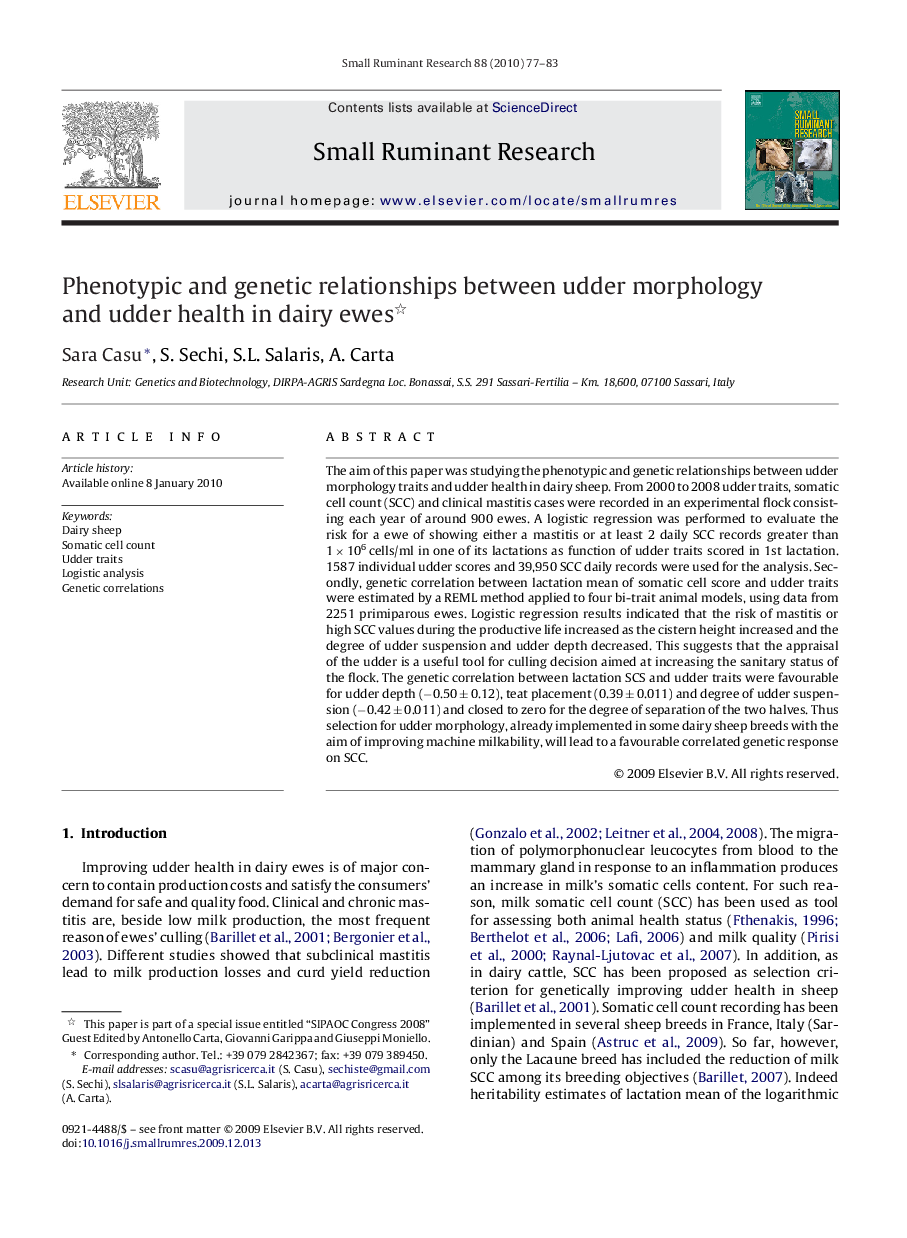| Article ID | Journal | Published Year | Pages | File Type |
|---|---|---|---|---|
| 2457586 | Small Ruminant Research | 2010 | 7 Pages |
The aim of this paper was studying the phenotypic and genetic relationships between udder morphology traits and udder health in dairy sheep. From 2000 to 2008 udder traits, somatic cell count (SCC) and clinical mastitis cases were recorded in an experimental flock consisting each year of around 900 ewes. A logistic regression was performed to evaluate the risk for a ewe of showing either a mastitis or at least 2 daily SCC records greater than 1 × 106 cells/ml in one of its lactations as function of udder traits scored in 1st lactation. 1587 individual udder scores and 39,950 SCC daily records were used for the analysis. Secondly, genetic correlation between lactation mean of somatic cell score and udder traits were estimated by a REML method applied to four bi-trait animal models, using data from 2251 primiparous ewes. Logistic regression results indicated that the risk of mastitis or high SCC values during the productive life increased as the cistern height increased and the degree of udder suspension and udder depth decreased. This suggests that the appraisal of the udder is a useful tool for culling decision aimed at increasing the sanitary status of the flock. The genetic correlation between lactation SCS and udder traits were favourable for udder depth (−0.50 ± 0.12), teat placement (0.39 ± 0.011) and degree of udder suspension (−0.42 ± 0.011) and closed to zero for the degree of separation of the two halves. Thus selection for udder morphology, already implemented in some dairy sheep breeds with the aim of improving machine milkability, will lead to a favourable correlated genetic response on SCC.
